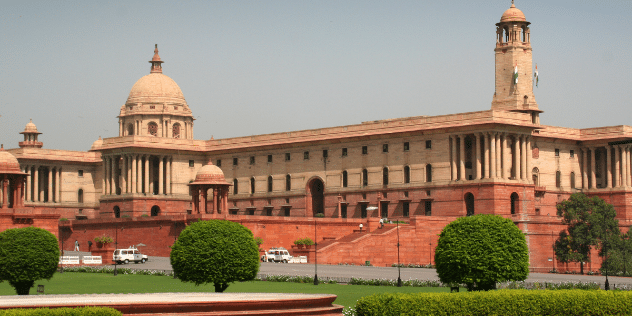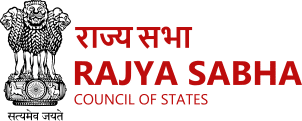
Quick Summary
Leadership: The Speaker presides over Lok Sabha, while the Vice President of India serves as the Chairman of Rajya Sabha.
Table of Contents
What is the difference between Lok Sabha and Rajya Sabha? The Lok Sabha and Rajya Sabha are the two houses of the Indian Parliament, each with distinct roles and structures.
While both play key roles in law-making, the Lok Sabha is more powerful in passing money bills and can even dissolve the government through a no-confidence motion. This blog post will delve into the various aspects that differentiate these two houses, including their structure, functions, powers, and election processes.

What is Lok Sabha? Lok Sabha, or the House of the People, is the lower house of India’s Parliament. It represents the Indian population and comprises members directly elected by the people through general elections every five years. The maximum strength of the Lok Sabha is 552 members to ensure broad representation.
What is the Rajya Sabha? It’s referred to as the Council of States and is the upper house of the Parliament. It represents the states and union territories, with members elected indirectly by the state legislative assemblies and appointed by the President. Unlike the Lok Sabha, the Rajya Sabha is a permanent body that cannot be dissolved.

| Aspect | Lok Sabha | Rajya Sabha |
|---|---|---|
| Maximum Strength (as per Constitution) | 552 | 250 |
| Representation of States | 530 members | 238 members (elected indirectly to represent States and Union Territories) |
| Representation of Union Territories | 20 members | Included within the 238 elected members |
| Nominated Members | 2 members nominated by the President from the Anglo-Indian community (Note: this provision was abolished in 2020) | 12 members nominated by the President for their expertise in fields such as literature, science, art, and social service |
| Current Strength | 545 | 245 |
| Current Composition | – 530 represent States – 13 represent Union Territories – 2 nominated members (as per earlier provision) | Included among the 238 elected member |
Here are the key differences between Lok Sabha and Rajya Sabha: The difference between Lok Sabha and Rajya Sabha lies in their composition, with Lok Sabha being directly elected by the people. At the same time, the Rajya Sabha members are comprised of appointed individuals representing the states. Another significant difference between Lok Sabha and Rajya Sabha is their legislative powers, with Lok Sabha having more substantial influence on financial matters. Understanding the difference between Lok Sabha and Rajya Sabha is essential for comprehending how India’s Parliament functions and ensures balanced representation.
| Difference | Lok Sabha | Rajya Sabha |
|---|---|---|
| What is it called? | House of the People | Council of States |
| Meaning of the Name | Represents the citizens of India; members are directly elected by the people | Represents the states and union territories; members are indirectly elected by the elected representatives of the State Legislative Assemblies |
| Tenure of the House | Five years (can be dissolved earlier, especially by a no-confidence motion) | Permanent body; not subject to dissolution. One-third of its members retire every two years |
| Head of the House | Speaker of the Lok Sabha | Vice President of India (serves as the ex-officio Chairman of the Rajya Sabha) |
| Minimum Age to Become Member | 25 years | 30 years |
| Strength of the House | Maximum strength is 552 members | Maximum strength is 250 members |
| Functions of the House | Initiates most bills, including Money Bills; plays a significant role in the legislative process | Represents the citizens of India; the people directly elect members |
India’s Parliament has two houses: the Lok Sabha (House of the People) and the Rajya Sabha (Council of States). This bicameral system was chosen for several reasons:
India’s bicameral Parliament is designed to balance the interests of the central government and the states, ensure effective lawmaking, and include diverse perspectives.
The Lok Sabha and Rajya Sabha, the two houses of the Indian Parliament, have distinct compositions:
| Aspect | Lok Sabha | Rajya Sabha |
|---|---|---|
| Maximum Strength | Total: 245 – 238 represents the states and the UTs – The president nominates 12 | Total: 245 – 238 represents the states and the UTs – the president nominates 12 |
| Current Strength | Total: 545 – 530 represents the States – 13 represents the Union Territories – The president nominates 2 from Anglo-Indian Community | Total: 545 – 530 represents the States – 13 represents the Union Territories – The president nominates 2 from the Anglo-Indian Community |
The difference between Lok Sabha and Rajya Sabha is that the Lok Sabha represents the people directly, while the Rajya Sabha represents the states and ensures federal interests. This key difference between Lok Sabha and Rajya Sabha helps balance direct representation and federal governance. Understanding the difference between Lok Sabha and Rajya Sabha is crucial for recognizing how both houses work together to uphold India’s democratic and federal structure.
Lok Sabha (House of the People)
Rajya Sabha (Council of States)
2. Representation and Role
Lok Sabha and Rajya Sabha play a crucial role in the country’s democratic governance. Each house has distinct functions and powers, and understanding the difference between Lok Sabha and the Rajya Sabha is essential to grasp how India’s Parliament operates. The difference between Lok Sabha and Rajya Sabha influences the legislative process, with Lok Sabha being the directly elected house, while Rajya Sabha represents states and union territories. This difference between Lok Sabha and Rajya Sabha ensures a balanced approach to lawmaking, where both houses contribute to shaping national policies.
The difference between Rajya Sabha and Lok Sabha is that they form a system of checks and balances, ensuring that laws are made thoughtfully and that the interests of the people and the states are considered.
Both houses of Parliament are responsible for making laws that impact every aspect of Indian life, from governance and social justice to the economy and security.
Both the Lok Sabha and Rajya Sabha have equal powers in several vital areas:
The difference between Lok Sabha and Rajya Sabha is that these shared powers ensure that significant national decisions are made with the agreement of both houses, preventing unilateral actions and promoting balanced governance. Understanding the difference between Lok Sabha and Rajya Sabha is crucial for grasping how laws are passed and decisions are made in India’s democratic system. Lok Sabha and Rajya Sabha differ in their composition and roles, with each house providing checks and balances on the legislative process.
While the Lok Sabha and Rajya Sabha function independently, there are times when they need to work together.
Joint sittings in both houses are rare and are used to resolve deadlocks.
While the Lok Sabha and Rajya Sabha have their roles, they interact and cooperate to ensure effective lawmaking and governance.
For students trying to remember the key difference between Lok Sabha and Rajya Sabha, here’s a handy table:
| Feature | Lok Sabha | Rajya Sabha |
|---|---|---|
| Name | House of the People | Council of States |
| Composition | Up to 552 members | Up to 250 members |
| Election | Direct elections | Indirect elections |
| Term | 5 years Permanent | 1/3 members retire biennially |
| Age Requirement | Minimum 25 years | Minimum 30 years |
| Leadership | Speaker | Vice President (Ex-officio Chairman) |
| Legislative Powers | Can introduce and pass bills | Reviews and suggests amendments on bills |
| Financial Powers | Initiates Money Bills | Reviews Money Bills |
| Special Powers | Can pass no-confidence motions | Can declare national importance on state subjects and form new All India Services |
| Dissolved? | Yes, every 5 years | No, never dissolved |
लोकसभा और राज्यसभा में अंतर:
लोकसभा और राज्यसभा भारत की संसद के दो हिस्से हैं। लोकसभा को जनता का घर कहते हैं, क्योंकि इसके सदस्यों को सीधे लोग चुनते हैं। इसमें 543 सदस्य होते हैं। लोकसभा का काम कानून बनाना और सरकार पर नजर रखना है।
राज्यसभा को राज्यों का सदन कहते हैं। इसके सदस्यों को राज्य विधानसभाओं के चुने हुए सदस्य चुनते हैं। राज्यसभा में 245 सदस्य होते हैं। यह एक स्थायी सदन है, यानी इसके सारे सदस्य एक साथ नहीं बदलते। राज्यसभा का काम भी कानून बनाना है, लेकिन यह लोकसभा की तरह ताकतवर नहीं है।
The differences between Lok Sabha and Rajya Sabha are significant in understanding how India’s legislative process works. These two houses complement each other to ensure a robust and balanced parliamentary system, reflecting the diverse needs and interests of the nation. While the Lok Sabha directly represents the will of the people, the Rajya Sabha safeguards the interests of states and provides valuable scrutiny of legislation. Together, they form the backbone of India’s democratic governance.
By understanding these differences, students can better appreciate the complexities and strengths of India’s parliamentary system and its role in shaping the nation, particularly the difference between Lok Sabha and Rajya Sabha. The difference between Lok Sabha and Rajya Sabha lies in their composition, powers, and functions, which are crucial to understanding the workings of the Indian Parliament.

The Lok Sabha is the lower house of the Parliament, representing the people of India. The upper house of the Rajya Sabha represents the states and union territories.
No, Lok Sabha has more power. It exclusively introduces money bills and holds no-confidence votes against the government.
No, an individual cannot simultaneously hold a seat in the Rajya Sabha and Lok Sabha. The houses have separate constituencies and membership criteria.
No state can be left unrepresented in the Rajya Sabha. All states are guaranteed representation. By-elections ensure vacancies are filled.
The Lok Sabha is generally considered more robust, especially in financial matters. It can override the Rajya Sabha in some instances.
Members of Parliament (MPs) sit in the Rajya Sabha, not MLAs. These MPs are elected by the elected Members of Legislative Assemblies (MLAs) from each state and union territory through a proportional representation system. Additionally, the President of India can nominate 12 Rajya Sabha MPs for their expertise in fields like literature, science, art, and social service.
Lok Sabha: Makes laws, controls the budget, and represents the public.
Rajya Sabha: This body reviews, amends, and suggests changes to laws proposed by the Lok Sabha and represents the states of India.
Most bills can be introduced in the Lok Sabha, including private member bills (introduced by non-government members) and government bills. However, money bills (related to taxation and government spending) can only be introduced in the Lok Sabha.

Authored by, Muskan Gupta
Content Curator
Muskan believes learning should feel like an adventure, not a chore. With years of experience in content creation and strategy, she specializes in educational topics, online earning opportunities, and general knowledge. She enjoys sharing her insights through blogs and articles that inform and inspire her readers. When she’s not writing, you’ll likely find her hopping between bookstores and bakeries, always in search of her next favorite read or treat.
Editor's Recommendations
Chegg India does not ask for money to offer any opportunity with the company. We request you to be vigilant before sharing your personal and financial information with any third party. Beware of fraudulent activities claiming affiliation with our company and promising monetary rewards or benefits. Chegg India shall not be responsible for any losses resulting from such activities.
Chegg India does not ask for money to offer any opportunity with the company. We request you to be vigilant before sharing your personal and financial information with any third party. Beware of fraudulent activities claiming affiliation with our company and promising monetary rewards or benefits. Chegg India shall not be responsible for any losses resulting from such activities.